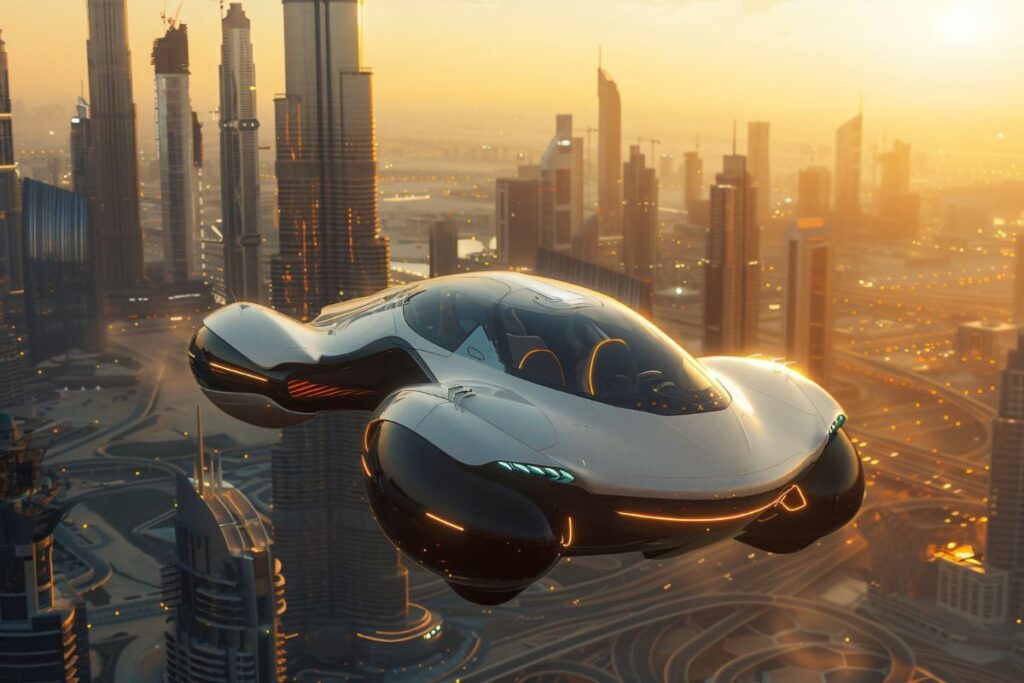The Use of AI in Automobile Industry: A Roadmap to the Future
Imagine sitting in your car, sipping coffee, while it drives you to work—navigating traffic, avoiding accidents, and optimizing the fastest route—all without human input. This isn’t science fiction anymore. It’s the reality shaped by the use of AI in the automobile industry. With every passing year, AI is not only reshaping vehicles but revolutionizing the very concept of mobility.
Let’s explore how artificial intelligence is driving innovation, improving safety, and shaping the future of the automotive world.
AI vs. Traditional Automotive Systems
| Feature | Traditional Systems | AI-Powered Systems |
|---|---|---|
| Driver Assistance | Basic (e.g., cruise control) | Advanced (adaptive, predictive behavior) |
| Manufacturing | Manual/robotic automation | Smart robotics with real-time decision-making |
| Maintenance | Scheduled servicing | Predictive maintenance using sensors |
| Navigation | Static GPS-based | Real-time, data-driven route optimization |
| User Experience | Standard interface | Personalized AI assistants |
Key Applications of AI in the Automobile Industry
1. Autonomous Vehicles (Self-Driving Cars)
AI lies at the heart of autonomous vehicles, enabling them to:
- Detect and interpret objects (pedestrians, vehicles, road signs)
- Make real-time driving decisions
- Improve over time using machine learning
Companies like Tesla, Waymo, and Cruise are pioneering AI-driven self-driving systems that can navigate complex urban environments.
2. Predictive Maintenance
Rather than waiting for a breakdown, AI enables cars to predict component failures based on usage data. This reduces downtime and improves road safety.
“AI-enabled predictive maintenance has reduced unplanned downtime by up to 30%,” notes a McKinsey report.
3. Smart Manufacturing
In factories, AI is optimizing production lines:
- Identifying defects in real-time using computer vision
- Automating supply chain decisions
- Reducing waste and improving quality
Brands like BMW and Audi are integrating AI in smart factories to boost efficiency and consistency.
4. AI-Powered Driver Assistance
Advanced Driver Assistance Systems (ADAS) leverage AI to assist in:
- Lane-keeping
- Collision avoidance
- Traffic sign recognition
- Parking assistance
Such features not only enhance comfort but are statistically proven to reduce accidents.
5. Personalized In-Car Experience
AI is tailoring the driving experience to individuals by learning habits:
- Preferred music, temperature, and seat positions
- Voice-controlled virtual assistants (e.g., Mercedes’ MBUX)
- Mood detection through cameras and sensors
This personal touch is helping transform cars into intelligent companions.
6. Insurance and Risk Assessment
AI analyzes driving behavior and vehicle data to assess risks in real time. This has enabled:
- Usage-based insurance models
- Fraud detection
- Faster claim processing
Firms like Progressive use AI to offer personalized premiums based on driving patterns.
Real-Life Insight: AI on the Road
During a test drive of a Tesla Model 3 with FSD (Full Self-Driving) Beta, I experienced AI in action:
- The car confidently navigated narrow urban streets.
- It stopped at a pedestrian crossing, even though the person hesitated.
- When a delivery truck blocked the lane, it rerouted smoothly without user input.
Moments like these highlight how far AI has come—and how close we are to mainstream adoption.
Challenges and Ethical Considerations
Despite its promise, the use of AI in the automobile industry raises questions:
- Data privacy: Cars collect huge volumes of data. Who owns it?
- Ethical decisions: In unavoidable crash situations, how should AI decide the least harm?
- Job displacement: AI may replace some roles in manufacturing or driving.
Regulatory frameworks are still catching up. Initiatives like UNECE regulations are working toward standardized laws for autonomous vehicles.
The Road Ahead: What’s Next?
- Level 5 Autonomy: Complete driverless cars for all environments.
- Vehicle-to-Everything (V2X): AI-powered communication between cars, infrastructure, and pedestrians.
- Green Mobility: AI optimizing electric vehicle range and charging patterns.
According to Statista, the global AI automotive market will exceed $74.5 billion by 2030. This growth is fueled by innovation and the need for safer, smarter, and greener mobility solutions.
Final Thoughts
The use of AI in automobile industry is more than a trend it’s a revolution in motion. From redefining how we drive to reshaping how vehicles are built and maintained, AI is steering the future.
Whether you’re a tech enthusiast, an auto manufacturer, or a commuter, the road ahead is AI-driven and it promises to be safer, smarter, and more sustainable.





Pingback: AI Best Practices: The Dos and Don'ts Every Business Must Know
Pingback: AI in Rain: The Tech Behind Smarter Climate Models | AI Soft Global